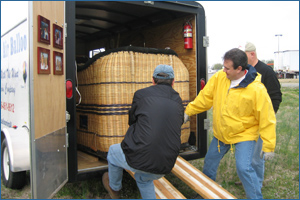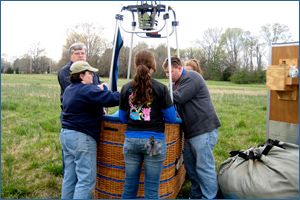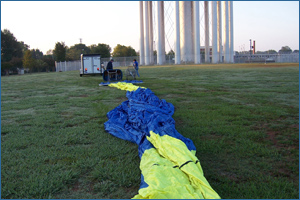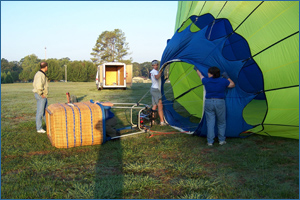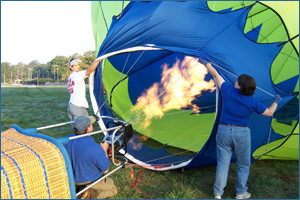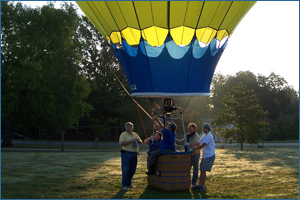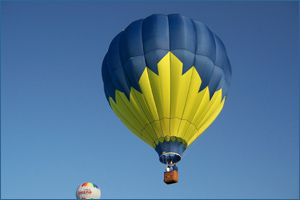
Have you ever wondered how exactly Hot-Air Balloons work? Below is an overview of how hot air balloons fly and the systems that make them up.
When air particles are energized by heat it becomes less dense than cooler air, and because of that it rises; floating on the top of the cooler air below it. In nature this is known as a convection cycle; the sun heats the earth, the air above the surface heats thus shifting it upward, this is also the natural cause of wind.
Hot air balloons artificially heat the air inside the balloon and creates a 'bubble' of hot air inside. This mass of warm air allows the balloon to become buoyant and rise through the cooler air around it.
To produce the hot-air that allows a balloon to fly the aircraft must carry its own fuel and heat source to create enough hot air to allow it to lift several hundred pounds off the ground.
Below are pictures and explanations of the major equipment makes up a modern hot-air balloon. Each component is essential to the safe operation of the aircraft and the FAA requires careful maintenance and review of every balloon by the pilot before each flight and a yearly inspection done by certified repair station.

The envelope of a hot-air balloon is the colorful bag of coated rip-stop nylon or polyester fabric that holds the air that lets a balloon fly. The envelope is made up of many components.

Highlighted red are load tapes that hold the envelope together. Green are gores, strips of fabric between the load tapes. Highlighted pink is the skirt that blocks wind. At the top is a large vent simply called the top, that allows the balloon to be deflated.

The basket carries passengers. A basket is built out of hundreds of woven wicker rods. On top of the basket are uprights, metal or wood supports that form a frame for the burner, and connect the envelope to the basket by cables or kevlar ropes.

The burner produces the heat to fly. It uses liquid propane directed as a jet of flame into the envelope. Burners have cone shaped tubes called coils. Small jets inside produce the flame fired into the envelope. A pilot light remains lit to ignite the jets when they are fired. And an assortment of valves to control the burner.

A balloon carries between one and four stainless steel or aluminum propane tanks. Flights last about an hour but different conditions cause more or less fuel use. The hotter the day less time and weight the balloon can carry and the more fuel it uses. Each tank is tested and re-certified by a yearly inspection.
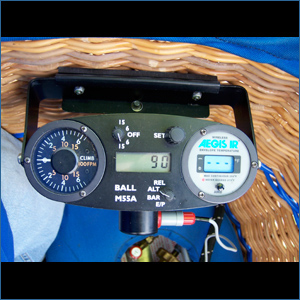
A balloon carries a few aircraft instruments. An altimeter measures the distance above the ground, sea level, or density altitude. A pyrometer to measure the temperature at the top of the balloon, and at the basket. A variometer measures the rate ascent or descent. Last, a timer tells how long the balloon has been in the air.








